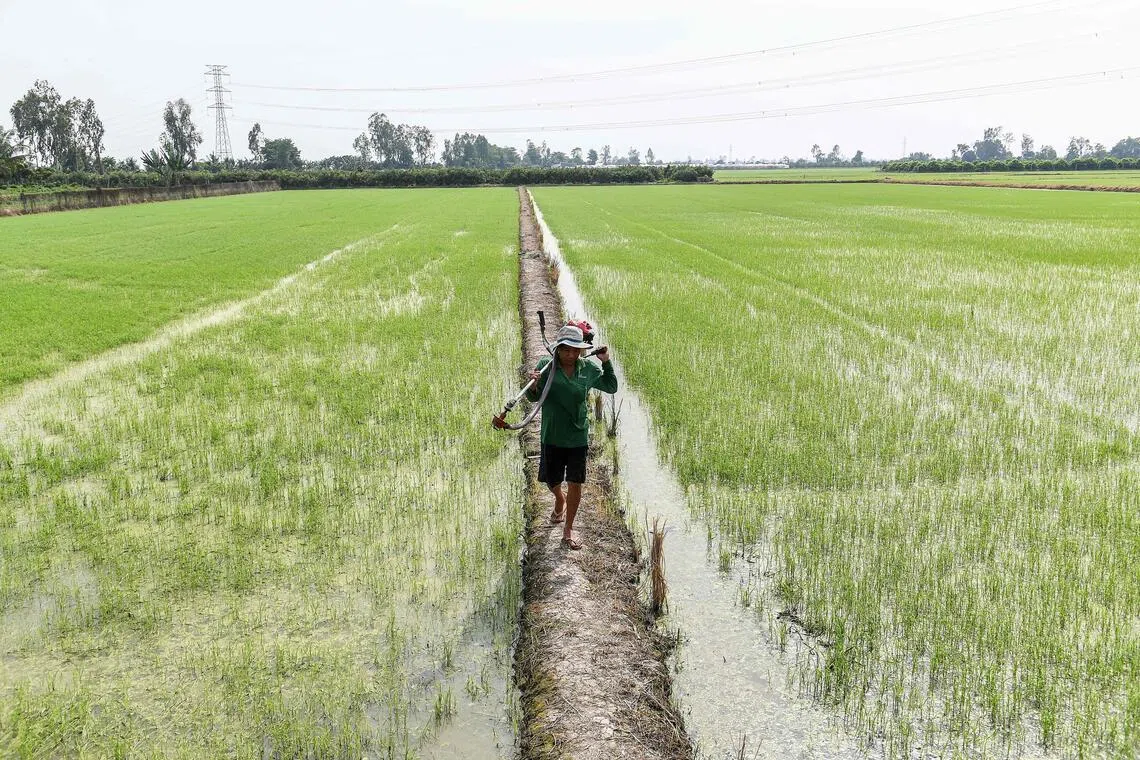For subscribers
There is a global rice crisis
The foodstuff feeds more than half the world – but also fuels diabetes and climate change
Sign up now: Get ST's newsletters delivered to your inbox

Global rice demand – in Africa as well as Asia – is soaring. Yet, yields are stagnating.
PHOTO: AFP
The Economist
Follow topic:
According to Indonesian legend, rice was bestowed upon the island of Java by the goddess Dewi Sri. Pitying its inhabitants the blandness of their existing staple cassava, she taught them how to nurture rice seedlings in lush green padi fields. In India, the Hindu goddess Annapurna is said to have played a similar role; in Japan, Inari. Across Asia, rice is conferred with a divine, and usually feminine, origin story.
Such mythologising is understandable. For thousands of years, the starchy seeds of the grass plant Oryza sativa (often called Asian rice) have been the continent’s main foodstuff. Asia accounts for 90 per cent of the world’s rice production and almost as much of its consumption. Asians get more than a quarter of their daily calories from rice. The United Nations estimates that the average Asian consumes 77kg of rice a year – more than the average African, European and American combined (see chart). Hundreds of millions of Asian farmers depend on growing the crop, many with only tiny patches of land. Yet, the world’s rice bowl is cracking.

